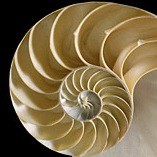One unique characteristic of salat, the obligatory form of prayer in Islam, is that it incorporates “spiritual” (faith, mindfulness) with physical elements – the body language of bowing and prostration + the time/space elements of astronomical prayer times and a very specific geophysical direction of prayer. This prayer form grounds the believer’s worship, making a connection between this temporary earthly life and Allah’s Divine eternal presence. This key connection in our lives is in that sense like the Quran: a timeless message sent down in time. So our salat connects our time/space “world” – in this case the “world” of our lives – to the timeless and unbounded “NOW” of Allah. Below is an aya referring to time, 55:26, followed by an aya referring to eternity or timelessness, 55:27.
55:26 All that lives on earth or in the heavens is bound to pass away
55:27 but forever will abide the Face of your Lord, full of majesty and glory
Continue reading






